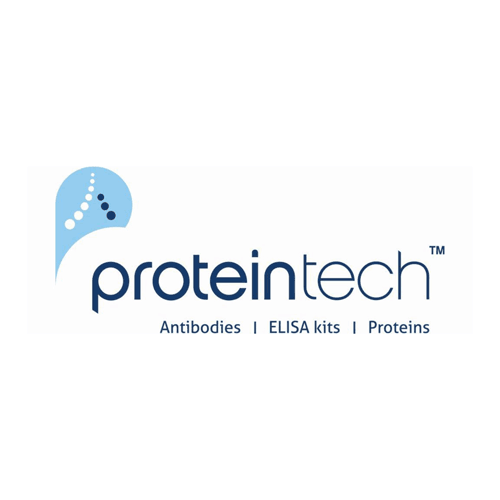Purity>90% by SDS-PAGEExtinction Coeff. A280 nm = 1.49 at 1.0 mg/mLPrecautionsUse normal precautions for handling human blood productsGeneral DescriptionNative human C8 is a naturally glycosylated protein composed of three polypeptide chains. The total molecular weight is 151,000 Da. The alpha chain (64,000 Da) and the gamma chain (22,000 Da) are disulfide linked. The beta chain (64,000 Da) is non-covalently bound to the α−γ complex. C8 is essential for formation of the membraneattack complex (MAC) and is activated non-proteolytically by binding to newly-formed C5b,C6,C7 complexes on the cell membrane. Each pathway of complement activation generates proteolytic enzyme complexes (C3/C5 convertases) which are bound to the target surface (Ross, G.D. (1986)). These enzymes cleave a peptide bond in the larger alpha chain of C5 releasing the anaphylatoxin C5a and activating C5b. This is the only proteolytic step in the assembly of the C5b-9 complex. C5b is unstable, but it remains bound to the activating complex for a brief time (~2 min) during which it either binds a single C6 from the surrounding fluid or decays and is no longer capable of forming MAC. The C5b,6 complex may also remain bound to the C3/C5 convertase where the binding of a single C7 exposes a membrane-binding region and C5b,6,7 can partially insert into the bilipid layer of the target cell. Up to this point the complex may diffuse away from the target cell and enter the membrane of a nearby cell. This is called bystander lysis or “reactive lysis” and can be a significant source of pathology. Each C5b-7 complex can bind one C8 protein molecule which results in the complex inserting more firmly into the membrane. The C5b-8 complex is capable of causing lysis without C9 although this is slow and requires many more complexes per cell than with C9. This property complicates C9 titrations since the precursor (C5b-8) can also cause lysis. The primary role of C8 is to catalyze the binding of C9 and each bound C9 can bind another C9 initiating formation of a ring structure containing up to 18 molecules of C9 (Podack, E.R. (1984)). C5b-9 complexes with one or more C9 are referred to as the Membrane Attack Complex (MAC) of complement. Not all C5b-8 complexes have complete rings of C9 with the average being only three C9 per C5b-8 complex. Nevertheless, these structures are capable of causing lysis if enough are formed in a given cell. Completed protein rings of C9 form the pores seen on electron micrographs and they result in leakage of metabolites and small proteins out of the cell as well as movement of water into the cell. If sufficient numbers are inserted into a cell membrane then water flowing into the cell, due to osmotic pressure, will rupture the cell membrane allowing the entire contents of the target cell (or a bystander cell) to be released. Either process may result in cell death. Originally it was thought that this required only one C5b-9 complex per cell (referred to as the “one hit theory” of lysis (Rommel F.A. and Mayer, M.M. (1973)), but this is probably not correct. For example, an erythrocyte requires ~850 C5b-9 complexes, as measured by the number of C7 molecules, for lysis to occur (Bauer, J. et al. (1979)). Host cells protected from MAC by CD59 require sufficient numbers of C5b-9 to tie up all the CD59 and then ~850 C5b-9 in addition. Lysis of nucleated cells requires many more C5b-9 complexes due to their size and due to the presence of multiple defense mechanisms in such cells.Physical Characteristics & StructureThe molecular weight of C8 is 151,000 Da and it is composed of three polypeptide chains. The alpha chain (64,000 Da) and the gamma chain (22,000 Da) are disulfide linked. The beta chain (64,000 Da) is non-covalently bound to the α−γcomplex. The pI of C8 is heterogeneous from 6.2 to 7.5.FunctionSee General Description above.
Assays
The simplest assay for C8 is to use C8-depleted human serum and measure the lysis of EA (classical pathway) or Er (alternative pathway) as a function of the concentration of added test sample or standard purified C8. Each unique application might require appropriate conditions to be determined. However, a typical assay would
involve mixing on wet ice 25 µL C8-Dpl, C8-containing sample diluted with GVB⁺⁺ to contain from 0.5 to 5 ng C8, and sufficient GVB⁺⁺ to bring the volume to 300 µL. EA (3 X 107 cells in 200 µL) diluted in GVB⁺⁺ should be added last. Purified C8 or normal human serum (NHS) may be used as a source of C8. The reaction mixture is incubated for 30 min at 37℃ and 1 mL of cold GVBE added, mixed and centrifuged to spin out unlysed cells. The released hemoglobin in the supernatant is then analyzed at 415 nm and compared to blanks without C8 (background lysis control) and cells incubated with 275 µL water instead of GVB⁺⁺ and 25 µL C8-Dpl (100% lysis control).
Many other assays have been described using EA preloaded with C1 (EAC1 cells) or preloaded with the classical pathway C5 convertase (EAC1423 cells). However, all these assays require the use of multiple purified complement components or more difficult-to-prepare reagents (Dodds, A.W. and Sim, R.B. (1997); Morgan, B.P. (2000); Tack, B.F., et al. (1981)).ApplicationsSee General Description above.In vivoThe normal serum concentration of C8 is 55 µg/mL (normal range 50 to 80µg/mL). The primary site of synthesis is the liver. C8 is also produced by monocytes, macrophages, fibroblasts, astrocytes and endothelial cells. C8 is an acute phase protein and its synthesis is stimulated by cytokines (IL-6, IL-1, IFNγ and to some extent ΤΝFα) that stimulate increased biosynthesis of many other complement proteins.RegulationMany proteins and other components of plasma have an inhibitory effect on the lytic activity of C5b-9 complexes but there are no specific C8 inactivators. Most of the C5b-9 inhibitors interact with the complex after the C5b-7 stage. If any of the C5bcontaining complexes fail to insert into a membrane they may self-aggregate or bind to regulatory proteins the most prevalent of which is S Protein. S Protein (also called vitronectin) is an 80,000 Da plasma protein found bound to most soluble C5b-9 complexes. Many other serum components inhibit or partially inhibit lysis by C5b-9 and these include SP40,40 (also known as clusterin and apolipoprotein J) and many plasma lipoprotein complexes (LDL, HDL, etc.).Host cells protect themselves from C5b-9 by a variety of mechanisms. Membrane proteins DAF, MCP, and CR1 inhibit formation of C3/C5 convertases preventing MAC formation. CD59, also called “homologous restriction factor” and “protectin”, is a 18,000 to 20,000 Da ubiquitous component of cell membranes that is very effective at binding to and inhibiting the lytic potential of C5b-8 and C5b-9 complexes. The speciesspecificity of CD59 is not absolute and many mammalian CD59 proteins inhibit or partially inhibit MAC from other species. The specificity that is observed appears to be due to incompatibilities between C8 of one animal and the CD59 of another. Like DAF, CD59 contains a GPI anchor (a post-translationally added lipid tail that inserts into the bilipid layer of the cell). The disease PNH is caused by the loss of enzymes that attach the GPI tail, thus depriving cells of the ability to express DAF, which inactivates C3/C5 convertases, and the ability express CD59, which inactivates C5b-9. This results in complement-mediated damage to and eventual lysis of long-lived blood cells such as erythrocytes and platelets.GeneticsHuman chromosome location 5q 12-14. Accession number HSC6A. Mouse chromosome 15. Human genomic structure: the gene spans 80 kb with 18 exons.DeficienciesHuman deficiencies have been found and exhibit autosomal recessive transmission. Patients generally exhibit abnormally high susceptibility to recurrent meningococcal meningitis and systemic neisserial infections. Partial deficiencies do not seem to show adverse clinical effects.DiseasesSee Deficiencies above.Precautions/Toxicity/HazardsThis protein is purified from human plasma, therefore precautions appropriate for handling any blood-derived product must be used even though the source was shown by certified tests to be negative for HBsAg, HTLV-I/II, STS, and for antibodies to HCV, HIV-1 and HIV-II.Hazard Code: B WGK Germany 3MSDS available upon request. Specifications and Purity: 1.0 mg/mL,0.22 µm filtered. Molecular Weight: 151,000 Da (3 chains). Related Document: https://ald-pub-files.oss-cn-shanghai.aliyuncs.com/aladdinsci/pdp/sds/1/C501331-SCI_62f63d0a123c49eef0d9b7bc1dc56421.pdf.
- UPC:
- 12352202
- Condition:
- New
- Availability:
- 8-12 weeks
- Weight:
- 1.06 Ounces
- HazmatClass:
- No
- WeightUOM:
- LB
- MPN:
- C501331-250μg
- CAS:
- 80295-58-5
- Product Size:
- 250μg















